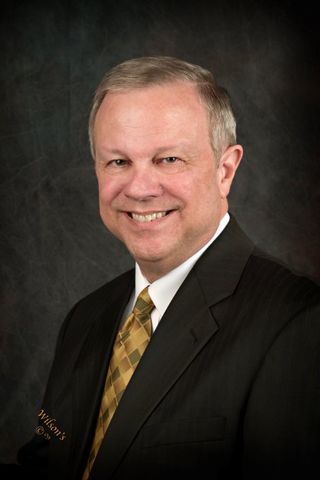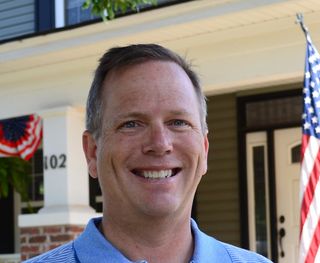Seems like everywhere you turn, there’s an article or recommendation to convert your traditional IRA to a Roth IRA. Why? It’s simple: unlike a traditional IRA, wherein you can take a tax deduction against your ordinary income for the amount contributed to it and it grows income tax free, a time eventually comes when you have to pay the piper.
Typically, at the latest, this happens at age 70½, when a minimum distribution is required from your IRA. All withdrawals from your traditional IRA are then taxed at your then income tax rate. On the flipside, a Roth IRA permits you to put money into a Roth now, without receiving any income tax deduction now, but as the Roth proceeds grow income tax free, they are also income tax free when you take your Roth IRA proceeds. This is very appealing to people who want to minimize their taxes later in life. In my experience, however, most people who do Roth IRAs are not doing them for themselves, but merely to have the protection of an IRA, and to be able to pass the assets to their beneficiaries without having to pay income tax. So what's the downside? Sadly, most promoters of Roth IRAs are not aware of the downside.
 The primary risk of investing in a Roth IRA is the possibility of it being lost should the need for long-term care arise. The question that centers the risk is whether an IRA is included as an available resource in determining an individual’s eligibility for Medicaid benefits to pay for long-term care. Federal law is clear: an IRA is an available resource in determining eligibility for Medicaid unless it is “annuitized.” Federal law permits states to enforce the federal law as they determine, as long as it’s not “more restrictive” than the federal law. Many states exempt an IRA from being considered available as long as it is in “payout status.” Accordingly, payout status has been interpreted as the IRA owner is receiving regular payouts equal to the required minimum distribution. The greatest risk, however, is that the less restrictive approach is merely a “policy” decision, and the state medical department can change its policy to the more restrictive federal law at any time without notice. There has been a trend in that several states have done this over the past few years. Will your state be next?
The primary risk of investing in a Roth IRA is the possibility of it being lost should the need for long-term care arise. The question that centers the risk is whether an IRA is included as an available resource in determining an individual’s eligibility for Medicaid benefits to pay for long-term care. Federal law is clear: an IRA is an available resource in determining eligibility for Medicaid unless it is “annuitized.” Federal law permits states to enforce the federal law as they determine, as long as it’s not “more restrictive” than the federal law. Many states exempt an IRA from being considered available as long as it is in “payout status.” Accordingly, payout status has been interpreted as the IRA owner is receiving regular payouts equal to the required minimum distribution. The greatest risk, however, is that the less restrictive approach is merely a “policy” decision, and the state medical department can change its policy to the more restrictive federal law at any time without notice. There has been a trend in that several states have done this over the past few years. Will your state be next?
Another risk of a Roth IRA is that in many states, it is treated like a regular investment account and is considered “available” because there is no required minimum distribution. As an available resource, it must be spent down to qualify for Medicaid benefits. This obviously is counterproductive to the original intention of creating the Roth IRA. Instead of being able to accumulate assets income tax free, seniors are forced to liquidate them to pay for their long-term care cost, which is not ideal because there is no tax advantage to doing so. If a traditional IRA is used to pay for long-term care costs, the offsetting Medicaid tax deduction enables 98 percent of the IRA to be utilized by the IRA owner when used to pay for long-term care costs, rather than the typical 70 percent after the benefit. Not so with a Roth. So what is one to do? It’s easy – use an IPug®.
IPug is an irrevocable pure grantor trust that allows the grantor to maintain control of the trust assets as trustee and modify the trust as to the timing, manner and method of distribution and as to the beneficiary. The one exception is that the grantor could never change ownership of the assets or permit principal back to themselves, which acts to protect the trust proceeds from predators and creditors, similar to an IRA. An IPug, however, also has the distinction in that its trust assets are not considered available in determining the grantor’s Medicaid eligibility.
An IPug trust essentially works like a combination of a Roth and a traditional IRA, but better. Once you put money into an IPug, if you invest in long-term growth assets, those assets are not taxed until you withdraw them. But, unlike a traditional IRA, if withdrawn, they are taxed at the preferred capital gains tax rate, rather than at the ordinary income tax rate. Most importantly, for most people who never intend to withdraw from their Roth prior to death, the IPug provides the same benefit as a Roth of providing the assets a full “step up” in basis. The primary advantage of an IPug, however, is that the trust assets are passed onto your heirs income tax free and fully asset protected for the rest of their lives.
The predominant benefit of an IPug over a Roth, however, is that it is protected from the nursing home during the grantor’s life! That’s a substantial difference that a Roth cannot provide. So, IPug or Roth, you decide – but it’s a great option to offer your clients.
Have you been considering becoming a Lawyers With Purpose member? Did you know one of the benefits of being a member is exclusive members only opportunities? One example is to co-author a book with Victoria and I. If you want to learn more about this opportunity consider participating in our FREE WEBINAR "Writing Your Way To Success" TOMORROW, Friday, November 20th at 12 EST.
There is no better tool that says, "I am the expert" than a book with your name on it. Two LWP members attended Victoria's "How to Write a Book Training" in 2010, went on to write a book and saw their practices surge because of it. Even if you don’t enjoy writing or think you can't write, attend this session to see how easy it can be. And learn how to market your book as well! Click here to reserve your spot for this webinar. If you're not a member, you can still join and shoot us an email after to let us know what you think to: info@lawyerswithpurpose.com
If you're a member and are already joining us – we'll see you there!
David J. Zumpano, Esq, CPA, Co-founder Lawyers With Purpose, Founder and Senior Partner of Estate Planning Law Center
 What is the greatest success you’ve had since joining LWP?
What is the greatest success you’ve had since joining LWP? 









